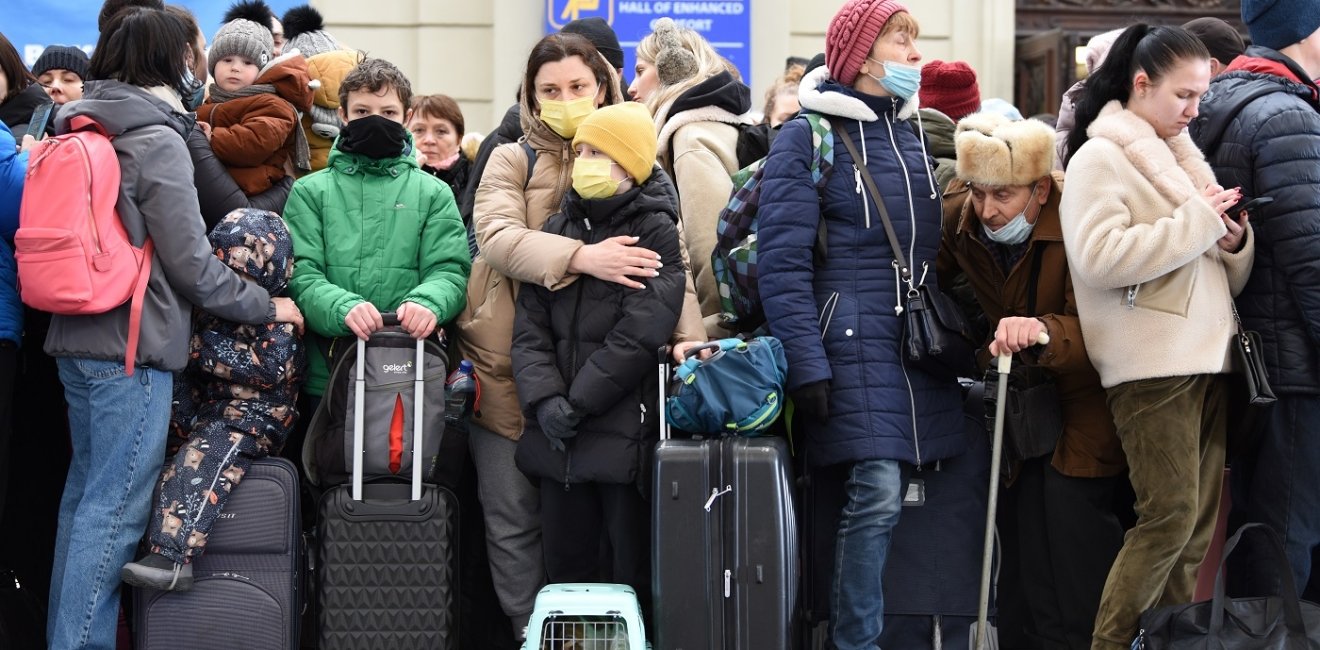
A blog of the Kennan Institute
BY KATERYNA ODARCHENKO
Since the start of Russia's full-scale invasion of Ukraine in February, many Ukrainians have been forced to flee their homes to protect their lives. Some went abroad and others moved within the country. Will those who are seeking refuge in other countries return? The answer to this question will directly affect the economic and demographic future of Ukraine.
According to official data from the Ministry of Internal Affairs as of the end of May, more than 6.2 million Ukrainians have been forced to go abroad. But the exodus did not stop in the spring: as of July 26, according to the Operation Data Portal of the UN Refugee Agency, a total of 9.9 million Ukrainians have fled to other countries. Most moved to Poland, the Czech Republic, Germany, and Slovakia. More than 2.3 million citizens of Ukraine registered for temporary protection in EU countries.
Ukrainians who have left the country are mainly women between 30 to 39 years old with children and with elderly parents. In March, Ukrainians believed in a quick end of the war. Now everyone has realized that the war may drag on, so women are starting to settle abroad, looking for apartments, jobs, and schools for their children. If the active phase of the war lasts for a year or longer, even more people will leave the country. At least five million refugees are not expected to return home.
This exodus is compounded by the fact that Ukrainians are also being forcibly deported to Russia. According to Iryna Vereshchuk, vice prime minister and minister of reintegration of the temporarily occupied territories of Ukraine, Russia has forcibly deported 1.2 million Ukrainian citizens. The goal of this criminal policy is not just to steal people, but to make deportees forget about Ukraine and prevent them from returning.
Migration is also affected by the battles for control of territory. There is an actual map of military action in Ukraine, where you can see where hostilities are currently taking place. Territories under attack are more dangerous than other regions of Ukraine. As military action is escalated, the number of people forced to leave their homes increases.
On the other hand, some Ukrainian refugees are returning to the motherland, according to a survey conducted between April and May by the sociological service of the Razumkov Center. Among citizens who left Ukraine due to hostilities at the beginning of the Russian invasion and are now returning, 87 percent are women, since women made up the majority of those who left the country. Among those who left, the largest group of respondents were aged 30 to 39 (37 percent).
The polling group Rating, which surveyed Ukrainian refugees on the subject of when they would return home, said that 24 percent of respondents want to return, but will wait for a certain time; 48 percent will return, but after the end of the war; and 8 percent said that they would not return home.
In the 11 years preceding the war, more than 3.3 million people left the country to work abroad, while their families remained in Ukraine. The inflow of remittances to Ukraine in 2020 reached $12.1 billion. Such remittances were good for the economy.
In 2021 alone, according to the Institute of Demography and Social Research, the number of labor migrants was three million. People aged 18–29 and 30–39 were most likely to migrate. Quite a large number of people worked under tourist visas. Among them were those who went abroad for temporary or seasonal work. On returning home, they contributed to Ukraine’s economy.
With the war, the situation has changed. Families in which one member worked abroad now have the opportunity to leave together. If we take a family with many children as an example, even the father has the right to travel abroad during martial law. Ukraine cannot expect contributions to the economy from people who live abroad and receive social assistance in other countries.
The European Union extends temporary protection for citizens of Ukraine who are there as a result of the war. This protection will be valid for one year and can be automatically extended for six months, a maximum of two times. The European Commission can also propose that the Council of the EU extend the protection for another year. It follows, then, that the maximum term for this temporary protection is three years.
At the end of martial law, the husbands of the women who have left will probably rejoin their families, since those families will have already settled into life in other countries. Ukraine should develop a plan so that these active working-age people return. If they do not return, there will be massive losses for the country's economy. With the aging of the nation, it will also spell the beginning of a demographic crisis.
In order to avoid a scenario where the state economy has to depend mainly on the social security of pensioners, persons with disabilities, and those in need of social protection, the government should encourage citizens to repatriate to Ukraine. A good place to start will be to create affordable housing and stable, well-paying jobs.
The opinions expressed in this article are those solely of the author and do not reflect the views of the Kennan Institute.
Author


Kennan Institute
The Kennan Institute is the premier US center for advanced research on Eurasia and the oldest and largest regional program at the Woodrow Wilson International Center for Scholars. The Kennan Institute is committed to improving American understanding of Russia, Ukraine, Central Asia, the South Caucasus, and the surrounding region through research and exchange. Read more

Explore More in Focus Ukraine
Browse Focus Ukraine
Talking to the Dead to Heal the Living

Ukrainian Issue in Polish Elections


